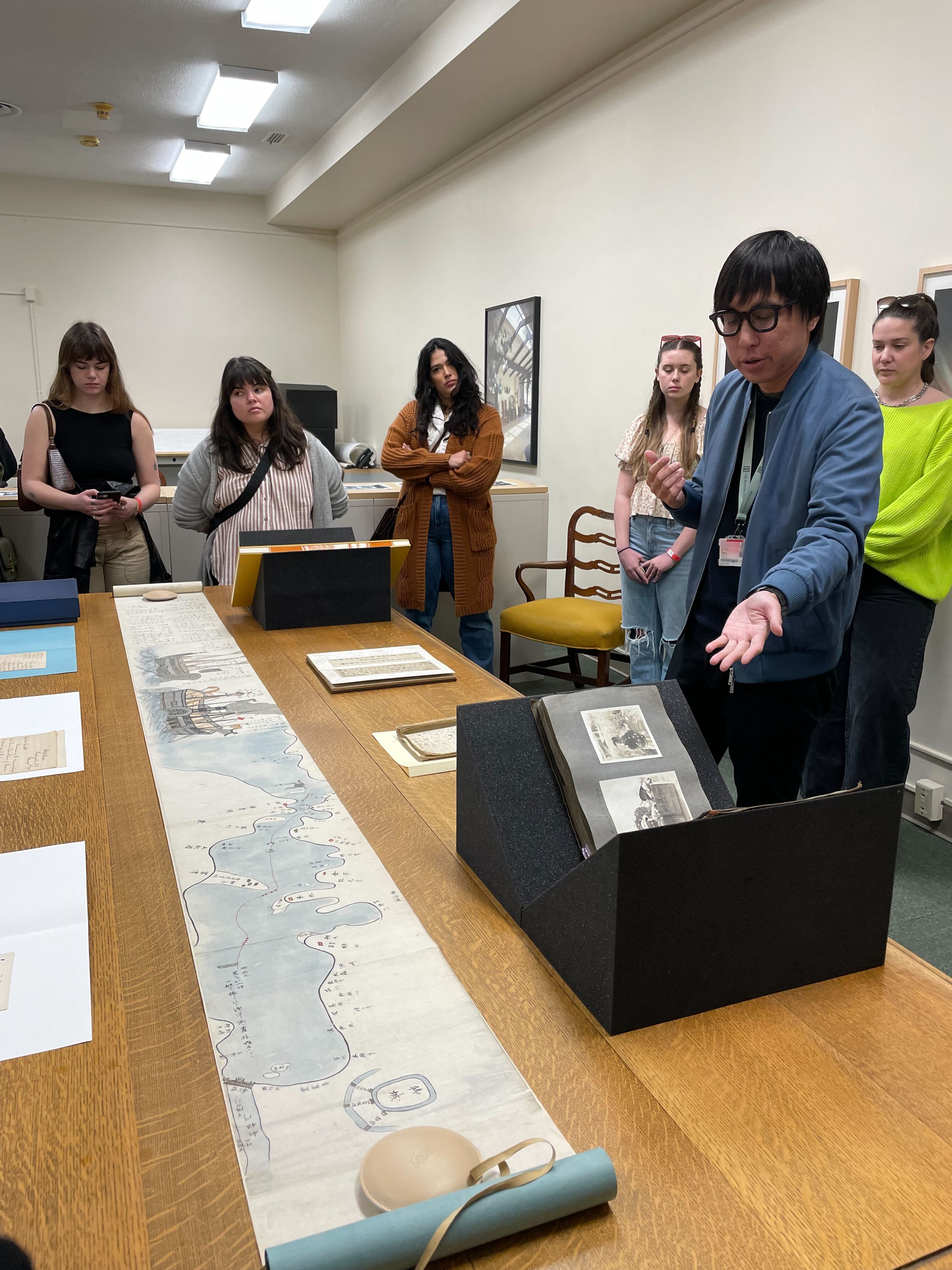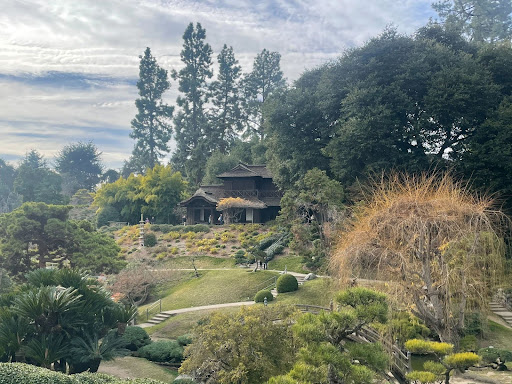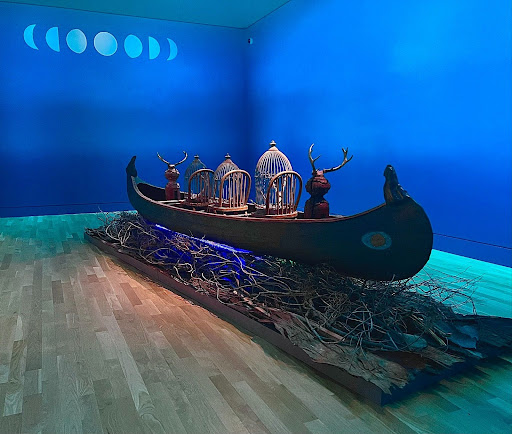
Excursion to the Huntington Library, Art Museum, and Botanical Gardens From Our Eyes:
January 24, 2024
This edition of From Our Eyes features Natalie Teeter, a rising junior pursuing a major in Strategic and Corporate Communication and minor in Studio Art. Teeter and a group of Wilkinson students and staff recently visited the Huntington Library, Art Museum, and Botanical Gardens to view their exceptional collection of Asian American artifacts.
The trip was organized by Associate Dean Stephanie Takaragawa, whose National Endowment of the Humanities grant to establish an Asian American studies minor, funded opportunities for experiential learning field trips and workshops. Past excursions included the Chinese American Museum, Museum of Latin American Art, the Bowers Museum, and the Japanese American National Museum.
Asian American History at the Huntington
 Our journey began with a private tour of the Huntington’s Research Center that houses rare books, manuscripts, and artifacts, curated to represent diverse cultures.
Our journey began with a private tour of the Huntington’s Research Center that houses rare books, manuscripts, and artifacts, curated to represent diverse cultures.
The Huntington used to primarily focus on Western materials but has diversified its collection and hired experts in other areas of study. Our tour guide was Li Wei Yang, Curator for the Pacific Rim collection. One of the most exciting items we had the privilege of viewing was one of the long-lost Chinese Encyclopedias, completed in 1408. Yang explained how The Huntington came to possess this encyclopedia through the Boxer Rebellion, which led to mass destruction and looting of Chinese cultural heritage. The encyclopedia at the Huntington was recovered by American missionaries who used it to shield themselves from gunfire. The missionary who ultimately acquired it, brought it to Ohio, where it was kept in his family until it was donated in 1968. As a group, we discussed the complexity surrounding museum objects who have come to exist through Western colonialism and imperialism. Our guide explained that the decision to keep the encyclopedia at the Huntington Museum was difficult, but ultimately stemmed from the desire to make it accessible to a broader scholarly audience than it would be in China.
The other materials we viewed included letters between Hawaiian Queen Lili’uokalani and her advisor during an attempt to restore her kingdom, and papers written in multiple languages by the Philippine’s first president, Emilio Aguinaldo. Another notable item was a Japanese scroll from 1853 detailing the Opening of Japan. It featured words and illustrations depicting American versus Japanese ships, narrating the story of the Perry Exhibition through Japan’s eyes. Another precious artifact is the first Latin edition of Marco Polo’s adventures, published in 1485.
Emilio Aguinaldo. Another notable item was a Japanese scroll from 1853 detailing the Opening of Japan. It featured words and illustrations depicting American versus Japanese ships, narrating the story of the Perry Exhibition through Japan’s eyes. Another precious artifact is the first Latin edition of Marco Polo’s adventures, published in 1485.
The Research Center, once only accessible to professors and Ph.D. candidates, is now available to anyone with a specific research project in mind, over the age of 18. If granted access, one can use the many of the quiet reading rooms to explore and study the vast collections, which. The collection includes rare books, first editions, and manuscripts housed in temperature and humidity-controlled rooms in multiple fields of study.
Gardens and Art Galleries
 The impressive gardens, ranging from the Japanese gardens to the Jungle garden, seamlessly blend art with nature. One current exhibit is by renowned artist Betye Saar. Her exhibit, “Drifting Toward Twilight,” a large-scale assemblage commissioned by the Huntington, aims to blend the gardens with the galleries, bringing the outside in. Saar utilized an 18ft canoe, antlers, birdcages, and materials she foraged from the Huntington grounds.
The impressive gardens, ranging from the Japanese gardens to the Jungle garden, seamlessly blend art with nature. One current exhibit is by renowned artist Betye Saar. Her exhibit, “Drifting Toward Twilight,” a large-scale assemblage commissioned by the Huntington, aims to blend the gardens with the galleries, bringing the outside in. Saar utilized an 18ft canoe, antlers, birdcages, and materials she foraged from the Huntington grounds.
From the gardens to the galleries and the impressive research center, Wilkinson’s trip to The Huntington was an enriching experience that sparked meaningful conversations surrounding historically significant items, collections, and exhibits. Our journey to The Huntington and the private tour deepened our appreciation of this institution’s mission to make research material accessible to those who wish to use it and the institution’s dedication to the pursuit of knowledge and preserving history.

